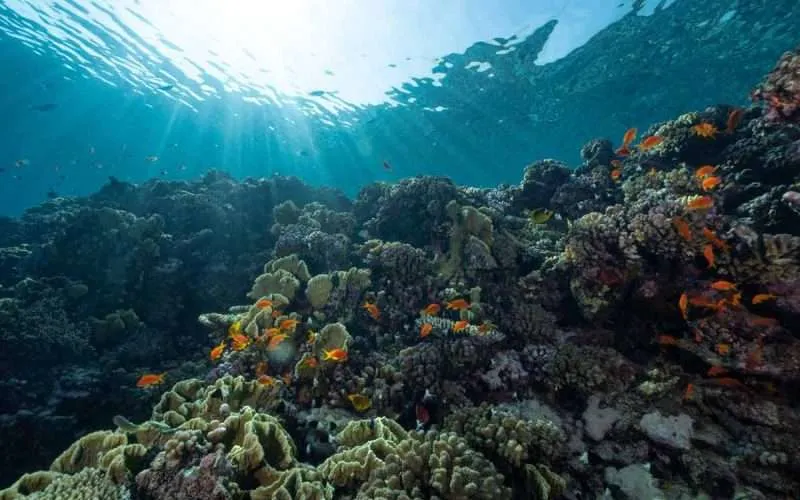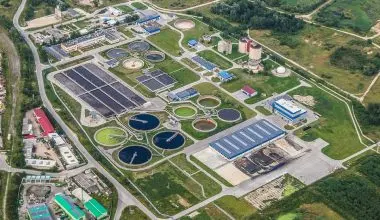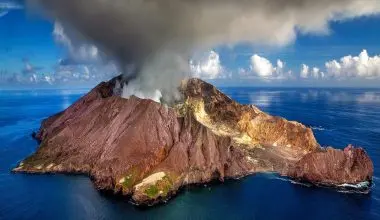Table of Contents Show
What is Ocean Acidification?
Ocean acidification happens when the acid concentration in ocean water increases, and the PH level falls below normal limits. Several factors add to this incidence. Salinity is the quantity of salt concentration in water. Ocean water is highly saline, with average salt concentrations at 35000 ppm. Therefore, because of increased salt content, the ocean’s average pH is around 8.1, while normal water is alkaline, being on the higher side of neutral on the pH scale.
There are particular spells when the ocean changes its nature. These can include the rise in the acidity of seawater.
Ocean acidification occurs when the level of carbon dioxide in the water surges radically. This process accelerates with the increased absorption of carbon dioxide in the ocean.
The increased acidity in seawater can be the result of human activities, such as the combustion of fossil fuels that cause damage to the atmosphere.
According to NOAA, ocean acidification is the decrease in the pH of the ocean over a long period of time, begun mainly by uptake of carbon dioxide (CO2) from the air.
7 Causes of Ocean Acidification
1. Increase of Carbon dioxide levels in the Ocean
When the quantity of carbon dioxide gas increases in the ocean, it certainly distresses the whole water. When sea organisms pass away on the sea beds, their remnants pile up and form corals, which contain calcium carbonate in the form of aragonite.
The process of calcification results in the release of carbon dioxide into the ocean. Furthermore, these organisms discharge carbon into the water during photosynthesis.
The excess level of carbon dioxide has a harmful effect on the composition of the seawater as it supplements acidity.
2. Increased Concentration Atmospheric Carbon dioxide
The pollution present in the atmosphere can travel into ocean water. Numerous human activities result in the release of carbon dioxide into the atmosphere. The seawater absorbs the atmospheric carbon resulting in the production of carbonic acid. Consequently, the pH value of water decreases, thus adding to ocean acidification.
3. Higher Hydrogen Ion Concentration in Water
When seawater absorbs carbon dioxide, a series of chemical reactions result in an increased concentration of hydrogen ions. This process has far-reaching implications for the ocean and its inhabitants. During this process, water and carbon dioxide combine to form carbonic acid (H2CO3), a weak acid that breaks into hydrogen ions (H+) and bicarbonate ions (HCO3-). The hydrogen ions in seawater lead to a lower pH value, contributing to ocean acidification.
4. Use of Fossil Fuels
Fossil fuels usage releases carbon dioxide and other greenhouse gases into the atmosphere. Ocean acidification occurs when carbon dioxide enters the ocean, wherever air meets seawater. Acid rain may also add carbon dioxide to the seawater.
5. Inappropriate Waste Management
Removal of wastes has been a problem for many countries. As for those that border waterbodies and masses of water, they have been too hasty on using the oceans as the potential dumping grounds of domestic and industrial littering. Even so, since the atmosphere bears the brunt of toxic gases, sea waters are on the receiving end of unsafe liquid wastes.
Besides direct sewage waste removal, other wastes intensify the acidity in the water. For example, industrial and agricultural wastes having acidic composites are a hazard since they lower the PH of the ocean water.
6. Improper Land Management
Agriculture can also contribute to the issue of ocean acidity. Improper agriculture systems adopted by farmers can be responsible for this.
Some agriculture practices cause soil erosion, and chemicals added to the soil seep downstream into the ocean.
So, the water masses bordering the land can be affected adversely by acidic soil minerals and water contamination by improper land management.
7. Industrialisation
The industrialization of society presents hazardous repercussions for the environment. Industrial activity means that there is more carbon dioxide concentration in the atmosphere.
As soon as atmospheric carbon dioxide dissolves in water, it causes a rise in ocean acidity
Industries produce harmful gases, including carbon dioxide, sulfur dioxide, and nitrogen oxides, which later create acid rain or dissolve in the oceans to produce acidic conditions.
9 Effects of Ocean Acidification
1. Increase in the Carbon dioxide Concentration in the Ocean
Ocean acidification affects more than only the pH of the ocean. In reality, it alters the gaseous content in water by raising the concentration of carbon dioxide.
The reactions between carbon dioxide and water molecules produce additional carbonic acid. Moreover, during rainfall, the carbon concentration in seawater increases further. The addition of dissolved atmospheric carbon dioxide from rain produces more carbonic acid. Excessive levels of carbon dioxide can cause choking and possibly the death of aquatic species.
2. Loss of Aquatic Life
At its normal conditions, seawater supports life. However, when the pH level is changed, some species are harmed. Aquatic life includes a variety of fish as well as animals such as whales, sharks, and others.
An increase in acidity makes life difficult, if not impossible, for several living creatures. As a result, some organisms in the aquatic biological environment may tragically disappear or even die.
3. Food Shortage
Ocean acidification worsens the problem of food scarcity in various ways. When fish perish, those who rely on them for food and livelihood face socioeconomic challenges.
Increased acidity makes shell-forming creatures like clams, oysters, and corals work harder to produce shells. The resultant scarcity, in turn, adversely affects the people who rely on these marine animals for sustenance or who consume fish that depend on coral reefs for habitat.
4. Food Web Interference
Ocean acidification results in the demise and loss of marine plants and animal life in the sea. When some organisms become nonexistent, their dependents are vulnerable because they have nothing to feed on.
5. Impact on Human Health
Ocean acidification can negatively affect human health. Studies show that an acidic environment may cause a reduction of lipids and proteins in the fish, including the essential omega-3 fatty acids. Seafood is a fundamental source of protein for over 1 billion people worldwide, with most of them in areas of the most vulnerable communities.
Moreover, mercury and some metals such as aluminum, iron, lead, or copper are often more bioavailable in acidified aquatic habitats. The intake of such toxic materials may compromise human health.
6. Impact on the Reefs
As additional carbon dioxide dissolves into the oceans, it bonds to form carbonic acid. The acid then creates hydrogen ions and bicarbonate ions. Ocean acidification results from an increased concentration of hydrogen ions and a reduction in carbonate ions due to the absorption of carbon dioxide.
The issue with this chemical process is that marine creatures having shells (corals, crustaceans, mollusks, foraminifera, and coralline algae) require carbonate ions to form calcium carbonate shells and skeletons.
Therefore, excess carbon dioxide in the ocean leads to fewer carbonate ions available for calcium carbonate shells/skeletons.
Calcium carbonate is an essential element of coral reefs. Ocean acidification causes the dissolution of the calcium structure that makes up the coral.
7. Impact on the Ocean Planktonic Ecosystems
The phytoplankton is the basis of all ocean ecosystems.
It carries out photosynthesis and consequently initiates the chain of marine ecosystems. Therefore, the entire marine ecology is disturbed if anything hinders plankton photosynthesis.
Excessive concentration of CO2 in the seawater makes it difficult for plankton to carry out photosynthesis. Increased acidity of the seawater impedes many processes of the plankton, like nitrogen fixation and others as well.
8. Coastal Ecosystems are Affected
Not only the marine ecosystems, the coastal ecosystems are impacted as well by the acidification of the oceans. The coastal ecosystems encompass a diversity of plants that create a distinctive habitat.
With the acidification of the ocean, it is expected that the coastal areas also develop acidity in their soil. Whereas a little acidity may help in the better growth of plants, too much acidity could actually be harmful for their health.
Once a habitat is disturbed, it is likely that the entire ecosystem would be weakened as well. This complete acid augmentation chain creates a major imbalance in the ecological systems.
This acidification also reduces the productivity of the organisms found in the coastal areas. Their death rates might grow also. This can then lead to the destruction of a particular species.
9. High Latitude Oceans are at a Risk
The oceans found in the higher latitudes are the ones that are very prolific ecosystems. The Southern and the Arctic oceans are, indeed, the most dynamic of all the oceans.
Packed with life, these are some of the most misused oceans as well. Already this inhibits the ecosystem of these oceans. Contributing to that is the concern of acidification.
As the problem of acidification escalates, life in these oceans is impacted as well. So, their efficiency, as well as their lifecycle, declines.
6 Solutions to Ocean Acidification
1. Strict and Relevant Policies
Human activities are best controlled by rules and regulations of the land.
The first stage towards the battle against ocean acidification can be started through the endorsement of law that can ensure that the waste removal, among other pollution causing activities are managed. Such procedures would spread to the fisheries department to guarantee that security is maintained in food consumption.
2. Civil Education
Governments and international organizations can come up with some platforms where they inform the people on the dangers of climate change and ocean acidification. Such resourcefulness can impart some self-triggered correction that acts as supervision for environmental conservation.
Schooling would also be required since the information given in the theoretical setting will not only be relevant in real context but also in the understanding of the rules.
3. Consuming Only the “Right Fish”
Whatever the case may be, an increase in acidity would make fish consumption a dicey matter. This is why the powers that be should be tasked with the duty of warranting that only the less dangerous fish make their way into the marketplace. This can be extremely useful in decreasing the odds of getting food poisoning and being affected by carbon gas circulation in the atmosphere.
4. Decreasing the Consumption of Carbon-oriented Energy Sources
The incidence of a high concentration of carbon in the atmosphere can be credited to numerous human practices, which can be regulated to some degree. Carbon released from fossil fuels can be lessened by means of the reduction of the use of such fuels.
Implementing the usage of renewable energy sources can be the best existing alternative. Variation of energy sources such as solar and wind as the alternate energy sources can pay off considerably.
When there is less carbon dioxide concentration in the atmosphere, there will be a subsequent adjustment in the ocean.
The other practical possible that can be dependable is geothermal energy , which is environmentally friendly. Geothermal power can be preferable initiative since it comes with less release of carbon dioxide in the air. This would diminish the likelihood of polluting the ocean waters.
5. Use of Alternative Water Sources
Due to the need to confirm that there is safety, skepticism might pay off.
This can be achieved through the use of other water sources such as the use of wells, boreholes or tapped rainwater as a substitute of ocean water locally. This can aid in reducing potential ocean water contamination.
6. Consuming Less Meat
This is not startling at all. Livestock farming is a major cause of greenhouse gases. It is these greenhouse gases is the source of all deterioration. By decreasing our meat intake, we would decrease the demand for meat.
This, in turn, would reduce the raising and nurturing of livestock. As a result, we would be successfully decreasing the emission of greenhouse gases in the atmosphere.
Though this might sound quite strange at first, still, this is one of the most efficient ways in which we can address the problem of ocean acidification.






